Aniruddha Tammewar
Detecting Emotion Carriers by Combining Acoustic and Lexical Representations
Dec 13, 2021
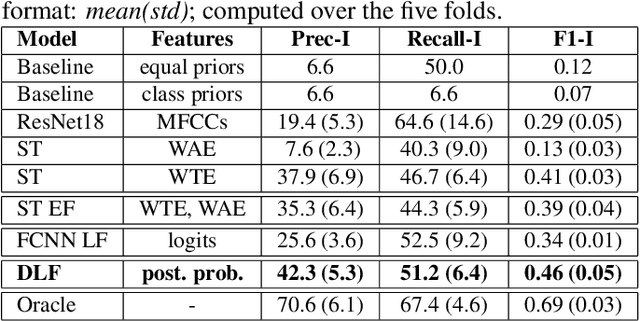

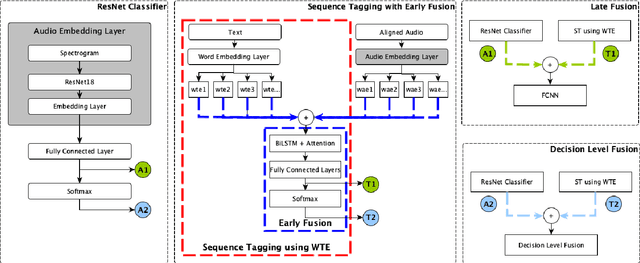
Abstract:Personal narratives (PN) - spoken or written - are recollections of facts, people, events, and thoughts from one's own experience. Emotion recognition and sentiment analysis tasks are usually defined at the utterance or document level. However, in this work, we focus on Emotion Carriers (EC) defined as the segments (speech or text) that best explain the emotional state of the narrator ("loss of father", "made me choose"). Once extracted, such EC can provide a richer representation of the user state to improve natural language understanding and dialogue modeling. In previous work, it has been shown that EC can be identified using lexical features. However, spoken narratives should provide a richer description of the context and the users' emotional state. In this paper, we leverage word-based acoustic and textual embeddings as well as early and late fusion techniques for the detection of ECs in spoken narratives. For the acoustic word-level representations, we use Residual Neural Networks (ResNet) pretrained on separate speech emotion corpora and fine-tuned to detect EC. Experiments with different fusion and system combination strategies show that late fusion leads to significant improvements for this task.
Emotion Carrier Recognition from Personal Narratives
Aug 17, 2020



Abstract:Personal Narratives (PN) - recollections of facts, events, and thoughts from one's own experience - are often used in everyday conversations. So far, PNs have mainly been explored for tasks such as valence prediction or emotion classification (i.e. happy, sad). However, these tasks might overlook more fine-grained information that could nevertheless prove relevant for understanding PNs. In this work, we propose a novel task for Narrative Understanding: Emotion Carrier Recognition (ECR). We argue that automatic recognition of emotion carriers, the text fragments that carry the emotions of the narrator (i.e. 'loss of a grandpa', 'high school reunion'), from PNs, provides a deeper level of emotion analysis needed, for instance, in the mental healthcare domain. In this work, we explore the task of ECR using a corpus of PNs manually annotated with emotion carriers and investigate different baseline models for the task. Furthermore, we propose several evaluation strategies for the task. Based on the inter-annotator agreement, the task in itself was found to be complex and subjective for humans. Nevertheless, we discuss evaluation metrics that could be suitable for applications based on ECR.
Annotation of Emotion Carriers in Personal Narratives
Feb 28, 2020
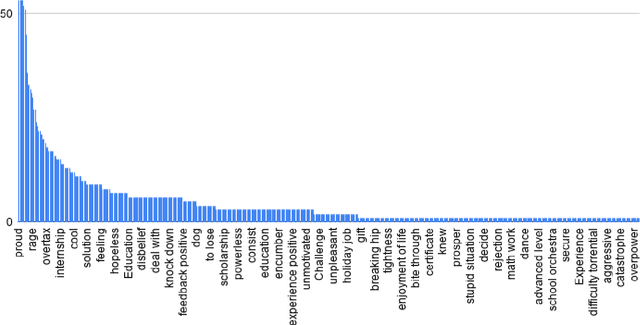
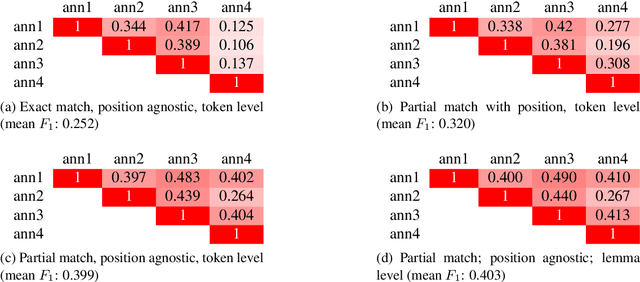
Abstract:We are interested in the problem of understanding personal narratives (PN) - spoken or written - recollections of facts, events, and thoughts. In PN, emotion carriers are the speech or text segments that best explain the emotional state of the user. Such segments may include entities, verb or noun phrases. Advanced automatic understanding of PNs requires not only the prediction of the user emotional state but also to identify which events (e.g. "the loss of relative" or "the visit of grandpa") or people ( e.g. "the old group of high school mates") carry the emotion manifested during the personal recollection. This work proposes and evaluates an annotation model for identifying emotion carriers in spoken personal narratives. Compared to other text genres such as news and microblogs, spoken PNs are particularly challenging because a narrative is usually unstructured, involving multiple sub-events and characters as well as thoughts and associated emotions perceived by the narrator. In this work, we experiment with annotating emotion carriers from speech transcriptions in the Ulm State-of-Mind in Speech (USoMS) corpus, a dataset of German PNs. We believe this resource could be used for experiments in the automatic extraction of emotion carriers from PN, a task that could provide further advancements in narrative understanding.
Modeling user context for valence prediction from narratives
May 09, 2019
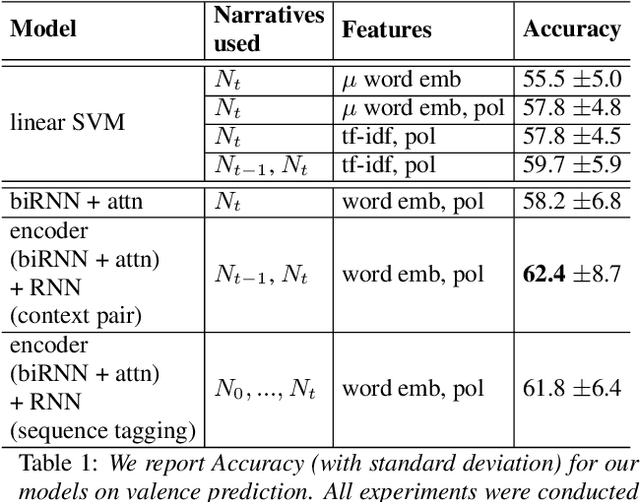


Abstract:Automated prediction of valence, one key feature of a person's emotional state, from individuals' personal narratives may provide crucial information for mental healthcare (e.g. early diagnosis of mental diseases, supervision of disease course, etc.). In the Interspeech 2018 ComParE Self-Assessed Affect challenge, the task of valence prediction was framed as a three-class classification problem using 8 seconds fragments from individuals' narratives. As such, the task did not allow for exploring contextual information of the narratives. In this work, we investigate the intrinsic information from multiple narratives recounted by the same individual in order to predict their current state-of-mind. Furthermore, with generalizability in mind, we decided to focus our experiments exclusively on textual information as the public availability of audio narratives is limited compared to text. Our hypothesis is, that context modeling might provide insights about emotion triggering concepts (e.g. events, people, places) mentioned in the narratives that are linked to an individual's state of mind. We explore multiple machine learning techniques to model narratives. We find that the models are able to capture inter-individual differences, leading to more accurate predictions of an individual's emotional state, as compared to single narratives.
Production Ready Chatbots: Generate if not Retrieve
Nov 27, 2017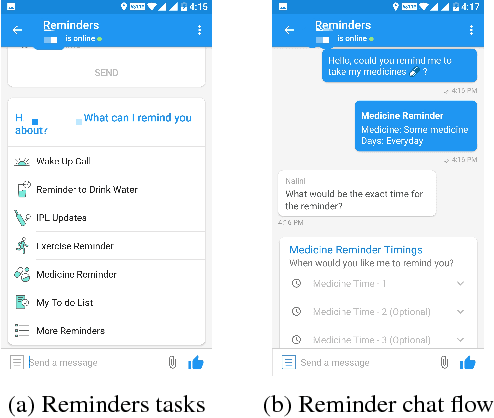
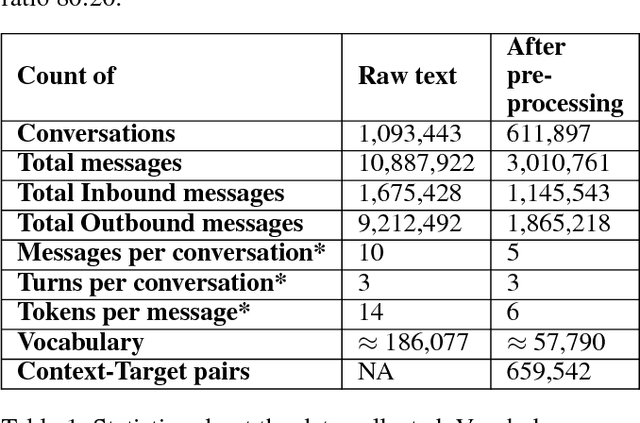

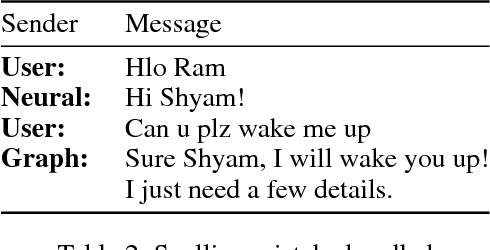
Abstract:In this paper, we present a hybrid model that combines a neural conversational model and a rule-based graph dialogue system that assists users in scheduling reminders through a chat conversation. The graph based system has high precision and provides a grammatically accurate response but has a low recall. The neural conversation model can cater to a variety of requests, as it generates the responses word by word as opposed to using canned responses. The hybrid system shows significant improvements over the existing baseline system of rule based approach and caters to complex queries with a domain-restricted neural model. Restricting the conversation topic and combination of graph based retrieval system with a neural generative model makes the final system robust enough for a real world application.
 Add to Chrome
Add to Chrome Add to Firefox
Add to Firefox Add to Edge
Add to Edge